NASA's Opportunity Mars rover has been declared dead, eight months after it last made contact with Earth. The solar-powered golf-buggy-sized robotic vehicle fell silent in June 2018 after an enormous dust storm plunged a quarter of the planet into darkness.
Opportunity and its twin rover named Spirit landed on the red planet in January 2004 for what was planned to be a 90-day mission. Spirit was declared dead in 2011, but Opportunity spent nearly 15 years exploring Mars, covering more than 28 miles.
In August 2012, Opportunity was joined by another rover, named Curiosity. Newsweek publishes some of the spectacular images captured by Spirit, Opportunity and Curiosity, from selfies to breathtaking Martian mountain landscapes.
Shortly after landing in the Eagle (Meridiani Planum) crater on January 25, 2004, Opportunity set off to explore the planet, taking one last look back at its lander, as seen in the photo below.
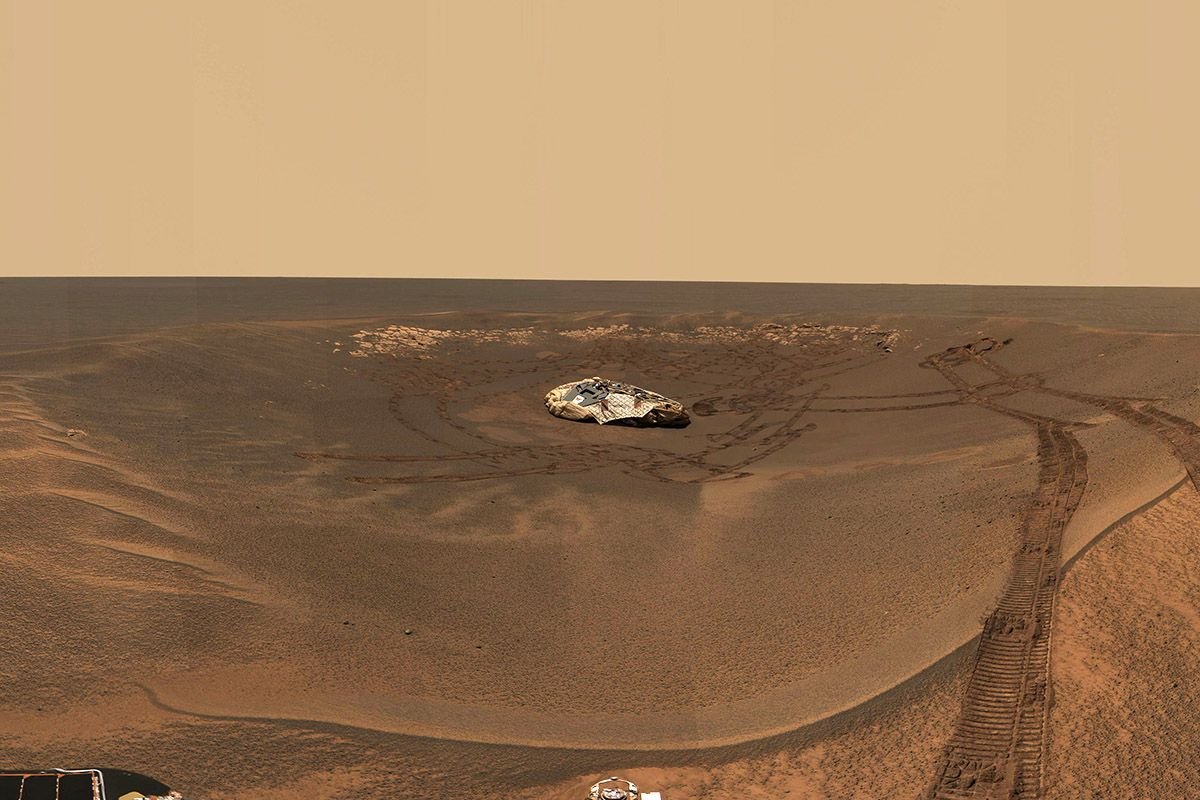
On the 10th anniversary of the attacks on the World Trade Center, Opportunity performed a memorial event on Mars. The rover photographed an American flag printed on one of its components, which was made from aluminum recovered from the site of the Twin Towers shortly after their destruction on September 11, 2001.

A Martian dust devil twists through the valley below, in this image captured by Opportunity from its perch high on Knudsen Ridge on March 31, 2016. Just like the ones seen in desert landscapes on Earth, Martian dust devils are created when warm air rises from the ground, forming a column that starts spinning and picking up any loose dust.
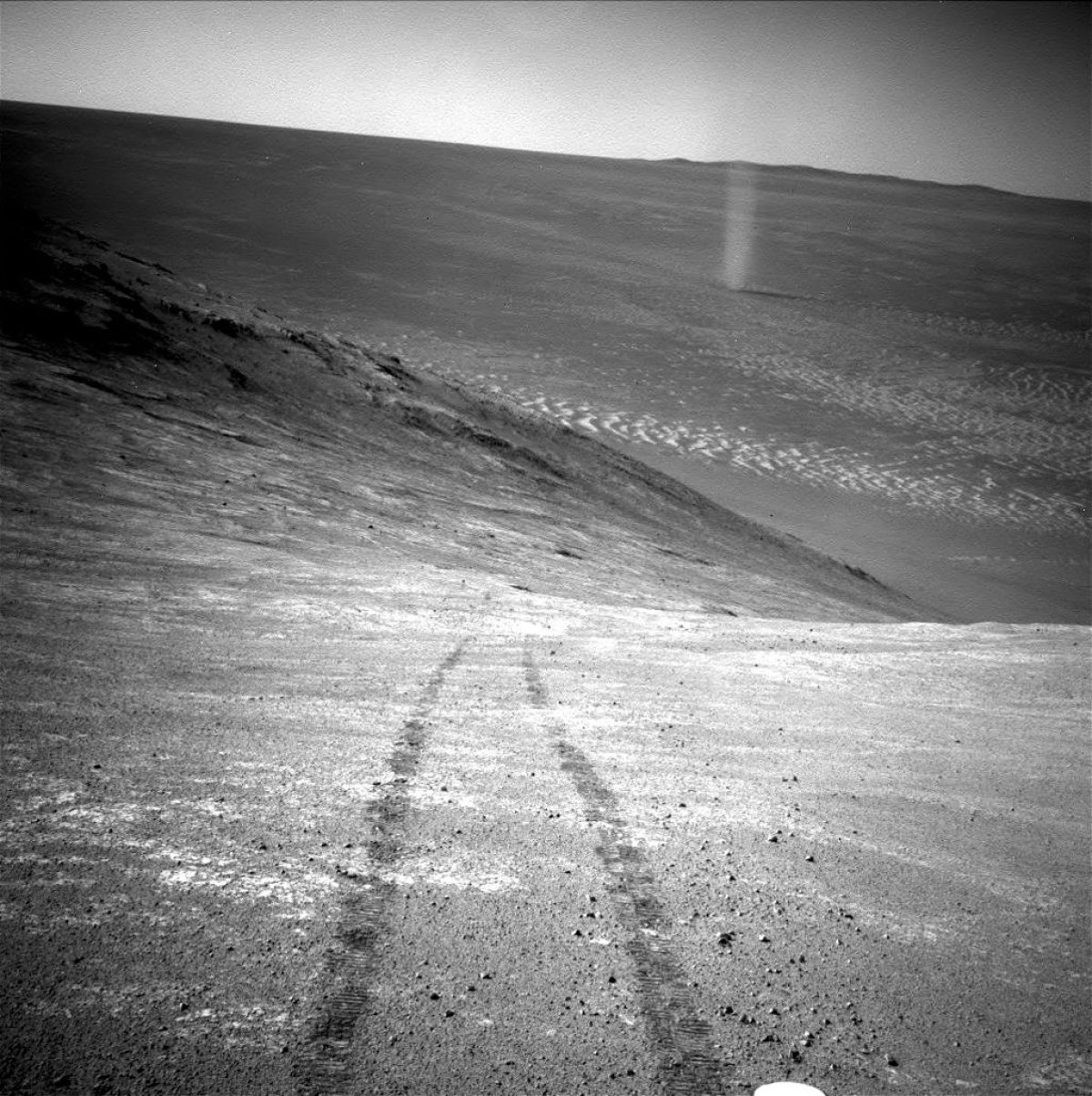
As the sun rose over Mars on February 15, 2018, Opportunity recorded the dawning of its 4,999th Martian day. Not bad for what was originally planned to be a 90-day mission. When this image was captured, the rover had covered round 28 miles since landing on Mars.

Opportunity took this selfie in late March 2014 after winds had removed much of the dust from the rover's solar arrays. Quite an improvement on how it had looked two months earlier.
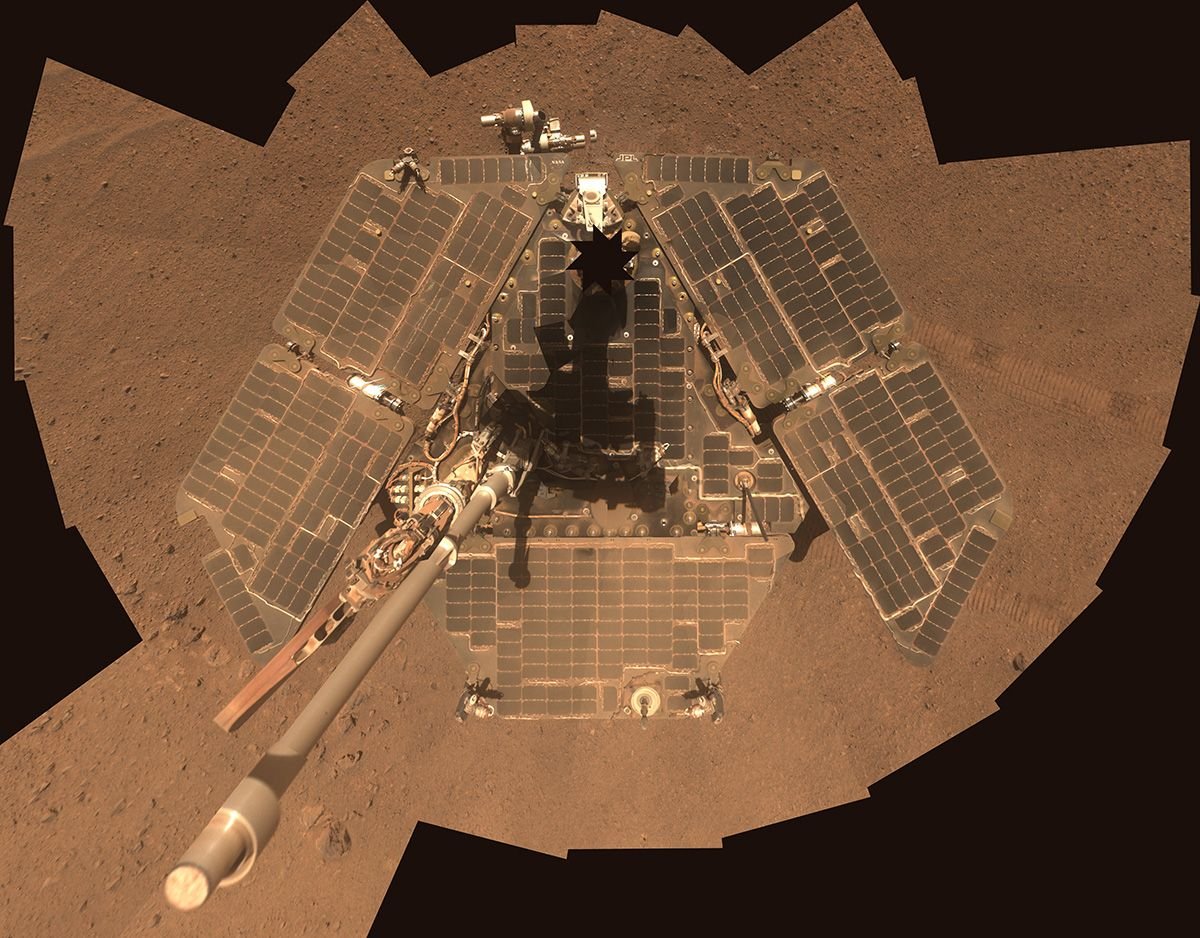
Eight-and-a-half years after Opportunity landed on Mars, it was joined by another NASA rover. Curiosity landed in Gale Crater on August 6, 2012. This amazing full-color high-resolution selfie was taken two months later and stitched together from 55 separate images.
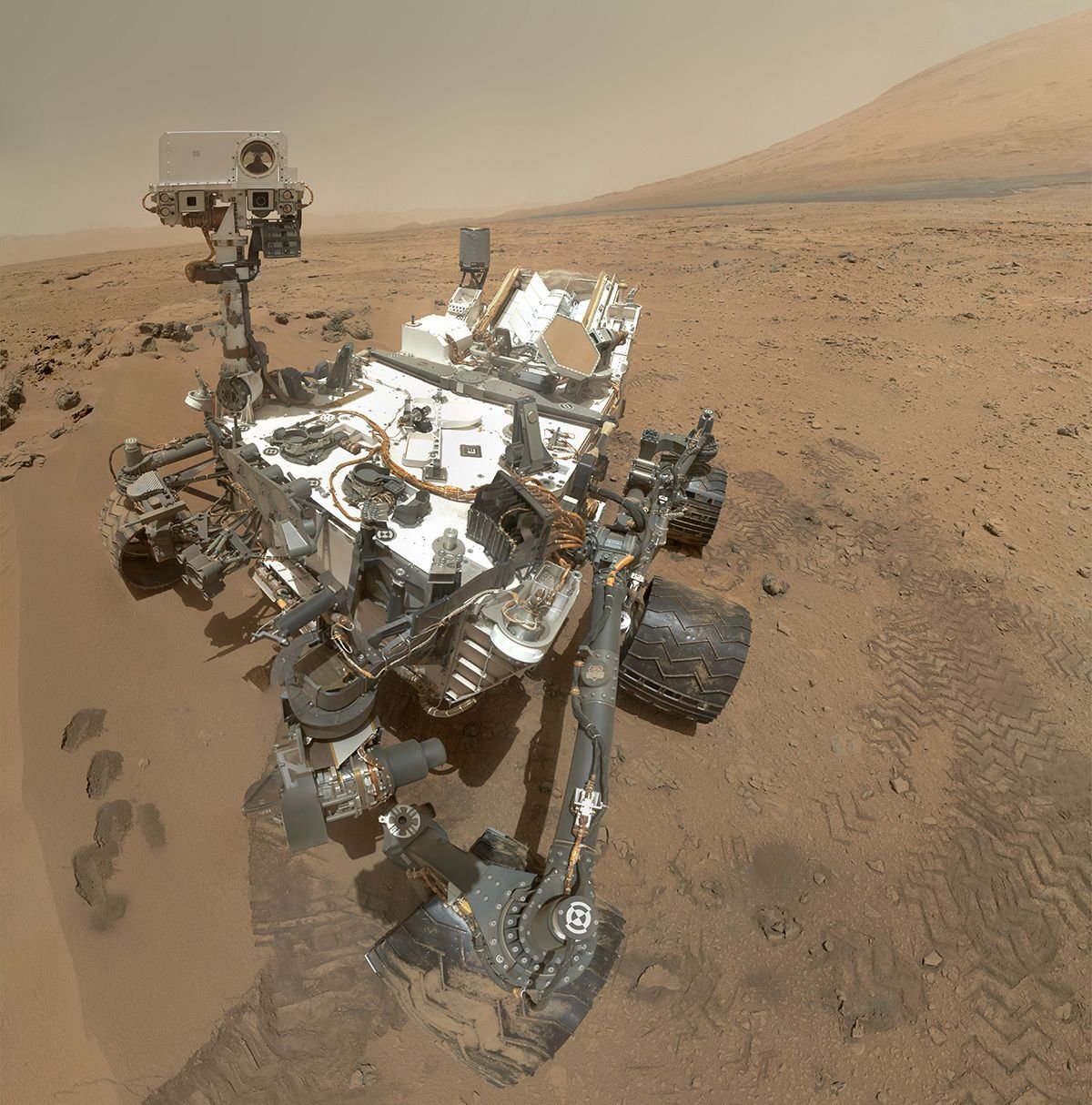
Martian selfies aren't just cool—they allow mission engineers to check the state of the rover, looking for problems such as dust accumulation and wheel wear. On April 21, 2015, Curiosity photographed one of its damaged wheels. The rover's six independently driven aluminum wheels are dented and pitted with holes from driving over Martian rocks.

What's the brightest "star" in the Martian night sky? The answer is Earth. This image, taken by Curiosity at about 80 minutes after sunset on January 31, 2014, shows Earth shining brightly from about 99 million miles away, with our moon visible below.

The image below, captured by Curiosity on December 13, 2015 in the Bagnold Dune Field, is undeniably beautifully, but it's more unusual than it may seem. It turns out that Martian sand forms a type of ripple never seen on Earth. Both planets have huge sand dunes and smaller ripples, typically less than a foot apart. But Mars also has a third type, about 10 feet apart and steeply asymmetrical. Scientists believe these mid-sized ripples are unique to the Martian surface due to the red planet's thin atmosphere.
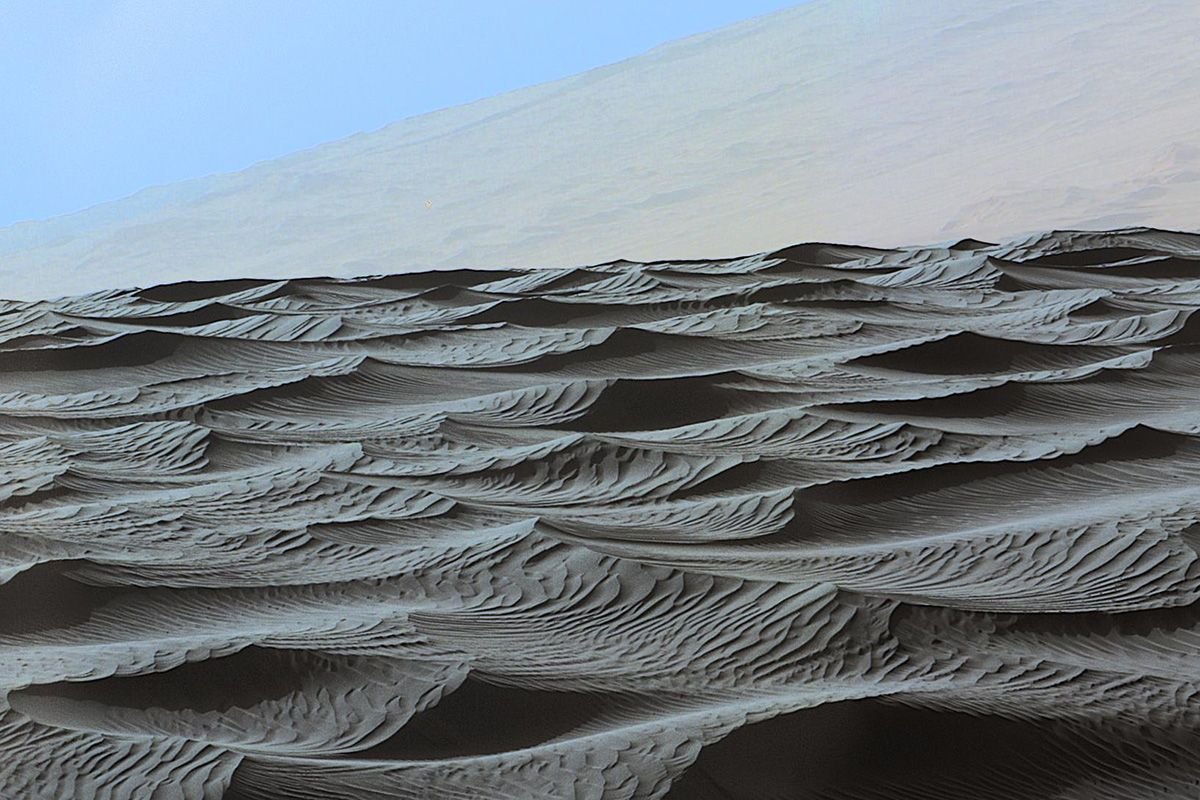
The next image, taken by Curiosity in the Kimberley formation, confirmed what scientist had long believed: Mars once had a climate that could sustain lakes. The strata in the foreground dip towards the base of Mount Sharp, indicating flow of water toward what was once a basin, but is now a huge mountain of sediment. Scientists think Mount Sharp, now three miles high, was built up over tens of millions of years by silt deposited by rivers.
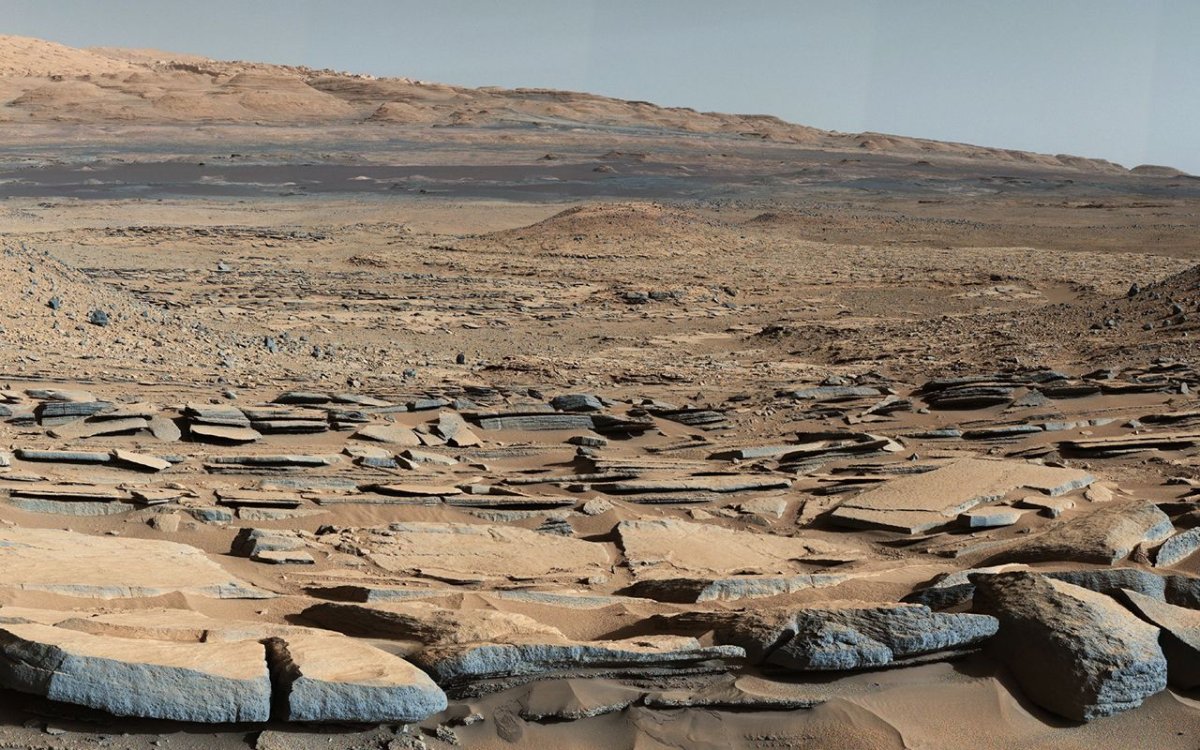
Looking like the landscapes of classic old Westerns, rugged buttes and mesas are seen on lower Mount Sharp. These layered outcrops are eroded remnants of ancient sandstone formed by sand desposited by winds after Mount Sharp had formed. This image was taken by Curiosity on September 8, 2016.
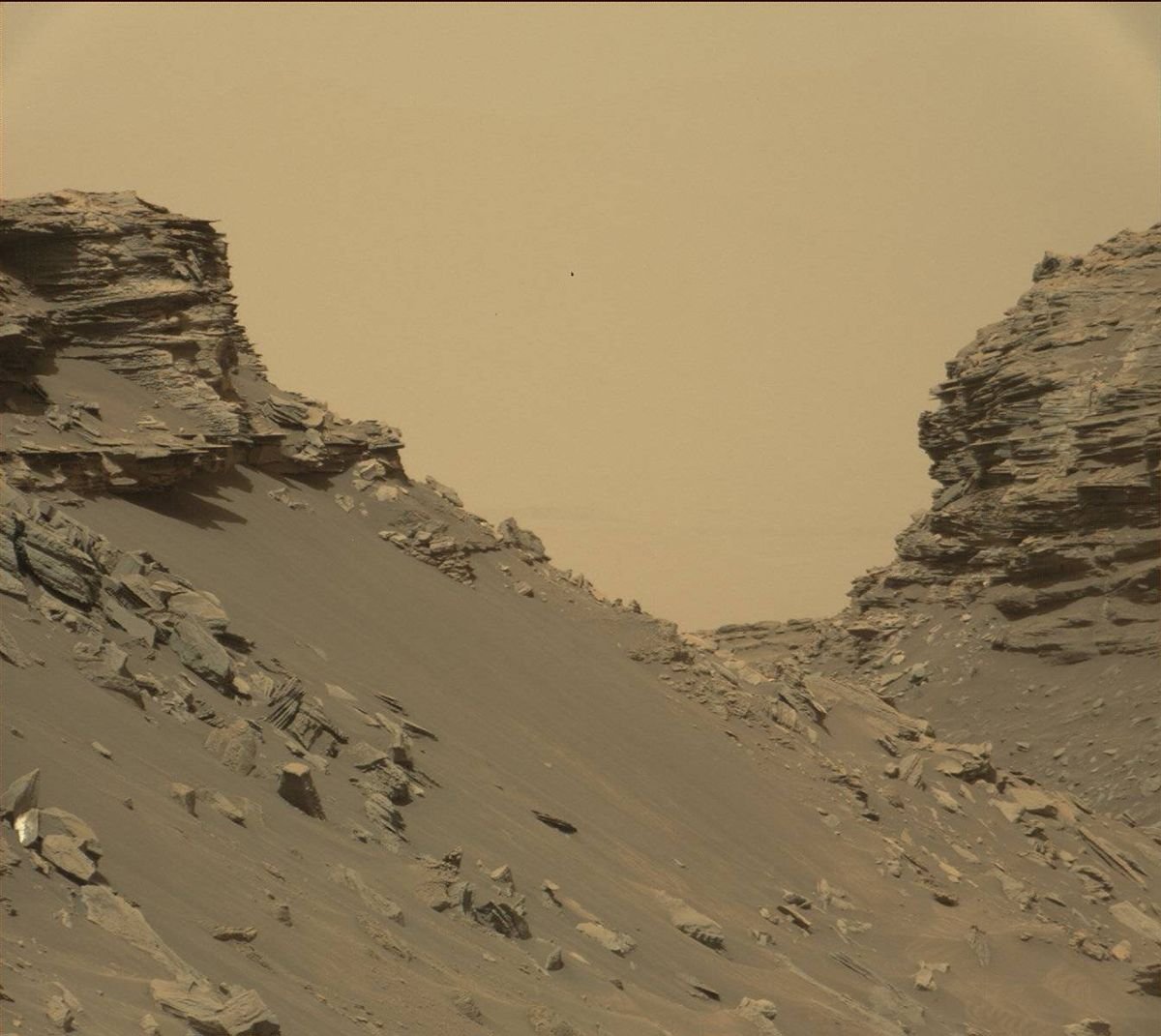
Are there spoons on Mars? Of course not. Yet sharp-eyed space enthusiasts have spotted not one but two undeniably spoon-like things on the red planet: a "floating spoon" in September 2015 and a "dusty spoon" in March 2016.

Spoons are far from the weirdest objects people claim to have spotted on Mars. There have also been faces, a pyramid, a skeleton, a replica of Stonehenge and a Star Destroyer from the Star Wars movies. These sightings can all be explained by our tendency to find patterns in random images, like seeing faces in clouds. Psychologists have a name for the phenomenon: pareidolia.
But you don't need to be a psychologist to see what everyone else saw in this image, which went viral after being posted on Reddit in 2013. Had a bored NASA employee really drawn a penis on Mars?

As usual, the real explanation was less exciting. This is simply the shape that naturally results when one of the six-wheeled Mars rovers makes a sharp turn.
Perhaps the most interesting thing about this image is that although it was taken by NASA's Spirit rover way back in 2004, the glaringly obvious penis wasn't spotted until nine years later, by which time Spirit had been dead for three years.
Uncommon Knowledge
Newsweek is committed to challenging conventional wisdom and finding connections in the search for common ground.
Newsweek is committed to challenging conventional wisdom and finding connections in the search for common ground.
About the writer
David Sim is the Associate Picture Editor at Newsweek (London). His responsibilities include managing the website's image gallery content and producing ... Read more
To read how Newsweek uses AI as a newsroom tool, Click here.








